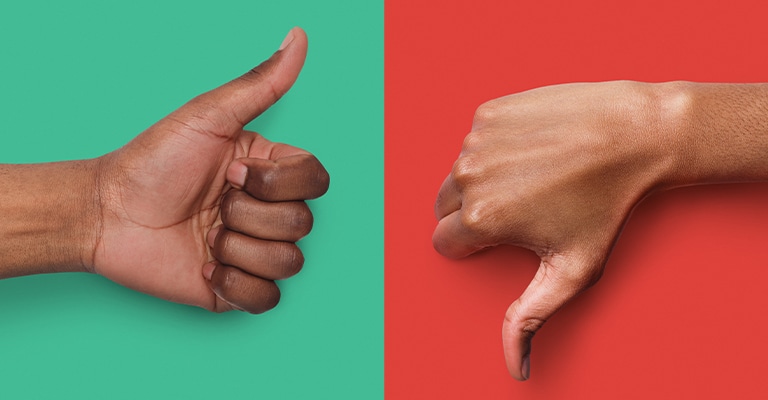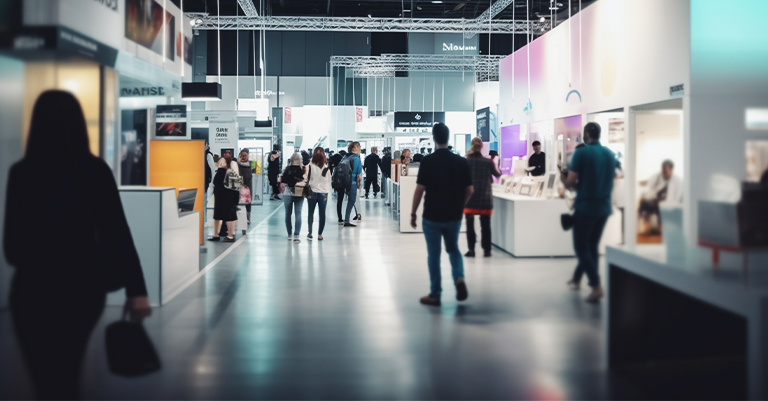Trade show technology has changed the industry from simple markets to engaging experiences. It makes shows more interactive and efficient. Online sign-up, engaging screens, apps, and data analysis are key. They improve operations and engage visitors. Tech also helps with networking and finding leads. It’s essential for businesses to stand out and be efficient today.
Key Trade Show Technologies
Digital Registration and Ticketing Systems
Online sign-up and ticketing are key for modern trade shows. They speed up entry and cut wait times for everyone. Automatic sign-up lets organizers manage info better and personalize the experience. Online tickets also allow quick updates and show who’s attending, helping with event planning.
Interactive Displays and Digital Signage
Interactive screens and digital signs make trade show displays more engaging. They display exciting content that updates quickly. Screens let visitors try things, improving understanding. Digital signs help with directions, schedules, and ads, making navigation easy.
Mobile Apps
Mobile apps are crucial for better trade show visits. They provide vistors with schedules, booth locations, speaker details, and live updates. The apps ease networking, allowing for connections, meetings, and sharing contacts. They also gather feedback, aiding quick improvements and future planning. Integrated with other tech, apps make events more cohesive and personalized.
Emerging Technologies Shaping the Future of Trade Shows
Virtual Reality (VR) and Augmented Reality (AR)
Virtual Reality (VR) and Augmented Reality (AR) are transforming trade shows with unique experiences. VR immerses users in virtual spaces, ideal for demos or tours of big items. AR enhances real items with digital info, making them more interactive. Both technologies captivate attendees, making events memorable and improving brand and product understanding.

Artificial Intelligence (AI) and Machine Learning (ML)
AI and ML are making trade show technology more personalized and efficient. AI chatbots quickly guide visitors to products or events. ML analyzes visitor data to offer recommendations, improve layouts, and predict trends. These technologies tailor the experience to individual needs and provide organizers with insights for improvement.
Robotics and Automation in Trade Shows
Robots and automation are now frequent at trade shows, streamlining operations and engaging visitors. Robots handle tasks like greeting, distributing materials, and guiding tours. Automation assists with sign-ups, lead collection, and booth setup or breakdown, allowing staff to focus on impactful tasks. The presence of robots also attracts attention, adding excitement and a modern touch to the event.
How to Integrate Trade Show Technology into Your Strategy
Setting Clear Objectives for Technology Use
Incorporating tech into your trade show strategy starts with setting goals. These might include increasing participation, simplifying registration, enhancing visitor experiences, or gathering data. Clear objectives guide you in choosing the right tech tools. It’s crucial that these choices align with your overall event aims, ensuring the tech contributes to your trade show’s success.

Selecting the Right Technologies for Your Needs
After you know your goals, it’s time to pick the tech that fits what you need. Consider who’s coming to your event, how big it is, and how much money you can spend. For instance, if you want to make the event more engaging, Augmented Reality (AR) and Virtual Reality (VR) could be a good choice. If you want to help people connect better, a mobile app with networking features might help. Ensuring the tech can work well with your other systems is vital. Doing deep research or talking to tech providers can help you find the best tech for your trade show technology arsenal.
Measuring the Impact of Technology on Trade Show Success
To truly know if your tech investments are worth it, you must see how they affect your trade show’s success. This means setting specific measures and goals, like more visitors, better engagement, or more leads. Use tools that analyze data to keep track of these goals before, during, and after your event. Also, getting feedback from people who come to the show and from exhibitors can tell you how well the tech worked. Looking at all this information helps you understand your trade show’s success and what you can do better next time, helping you improve each time you host a trade show.
Challenges and Considerations in Trade Show Technology
Budgetary Constraints
A big challenge in adding tech to trade shows is the cost. The latest and greatest tech can be expensive, from buying it to setting it up and keeping it running. Organizers have to carefully plan and decide what’s most important to balance wanting cool new tech with what they can afford. They need to think about how much value each tech option will bring to make sure it’s worth the cost and fits with their budget and goals. Looking for more affordable solutions or tech that can grow with the event can help deal with these money issues.
Ensuring Data Privacy and Security
As trade shows use more digital tools, keeping everyone’s personal and work info safe is very important. Using online sign-up, apps, and smart data analysis means collecting a lot of details about people. This could lead to worries about someone getting into the data without permission. To prevent this, organizers need to put strong security steps in place, follow privacy laws like GDPR, and make sure all their tech partners also keep data safe. It’s also important to teach people at the show about how their data is protected. This helps build trust and makes sure the trade show is a safe place for everyone.

Keeping Up with Rapid Technological Advancements
Technology changes fast, which can be tough for those planning trade shows. New things in VR, AR, AI, and robots keep coming out, making it hard to stay up-to-date and pick the best tech for each event. Older tech might get outdated quickly, meaning you have to keep spending money to update or change it. To deal with this, organizers should choose tech that’s flexible and can work with new developments. Keeping up with what’s new in the industry and staying close to tech suppliers can help organizers stay on top of changes and make sure their trade shows are always using the latest and greatest tech.
The Future of Trade Show Technology
Tech has changed trade shows, making them more fun, engaging, and smooth-running. Looking forward, tech will keep playing a big role in shaping these events, bringing new ways to make the experience better for everyone and reaching people worldwide. Things like virtual reality, smart tech, and apps are just the start, with even more exciting updates expected in the future. But there are challenges like managing costs, keeping information safe, and staying up to date with new tech. These will need careful planning and the ability to adjust. Even so, the outlook for trade shows is bright, with tech leading the way in bringing new ideas and chances to grow and connect within the industry.




